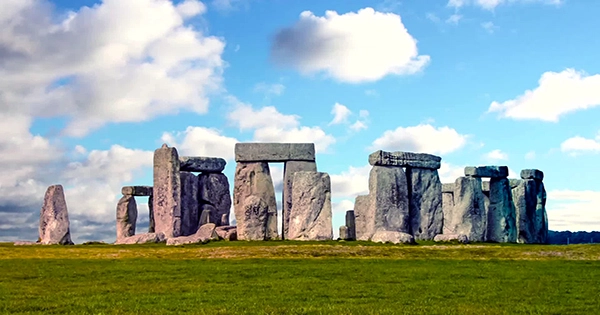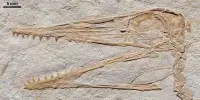Archeologists have discovered hundreds of enormous hunting trenches beneath the Stonehenge landscape, revealing that humans have been using this world-famous prehistoric monument for much longer than previously thought. Archaeologists from the University of Birmingham and Ghent University in Belgium utilized a variety of geophysical sensors to peer beneath the surface of the Stonehenge landscape. The researchers employed electromagnetic induction tools, which measure the electrical conductivity of the soil to build up a picture of what’s concealed beneath the earth, in addition to more “traditional” archeological procedures.
The researchers revealed significant evidence of previously undiscovered prehistoric activity from the Mesolithic to Later Bronze Age at the site, as reported in the Journal of Archaeological Science. They uncovered about 400 huge holes, each with a diameter of over 2.5 meters (8 feet), dating from the Early Mesolithic (8000 BCE) to the Middle Bronze Age (1300 BCE).
Stonehenge’s earlier Mesolithic pit is the oldest evidence of land usage yet unearthed. The researchers believe the hole, which dates from around 8200 BCE, was used as a hunting trap for huge wildlife such as aurochs (extinct cow ancestors), red deer, and wild boar. Stonehenge was built in phases between 3000 and 2000 BCE, but this hole demonstrates that humans had been utilizing the location for nearly 5,000 years before that.
The pits may be the biggest known Early Mesolithic pit feature in northwest Europe, and are even older than the neighboring Blick Mead habitation site, which is 1.5 kilometers (under 1 mile) distant. “The team has uncovered some of the earliest traces of human activity ever unearthed in the Stonehenge landscape by combining novel geophysical survey techniques with coring and pin point excavation,” said Dr Nick Snashall, Archaeologist for the Stonehenge & Avebury World Heritage Site.
Dr. Snashall stated, “The finding of the largest known Early Mesolithic pit in north-west Europe reveals that this was a particular area for hunter-gatherer groups thousands of years before the first stones were made.” Stonehenge, according to the newest research, has performed a range of roles over the millennia, not simply as a ceremonial place. For example, we know that Stonehenge was utilized as a burial site for a long time, as evidenced by the hundreds of bodies discovered there. In the early Mesolithic age, however, it appears to have been primarily utilized as a hunting area.
“What we’re seeing isn’t a single instance of time. The seven-thousand-year interval between the oldest and most recent ancient pits we’ve uncovered indicates that the traces we observe in our data span millennia. “The archaeology we’re seeing is the consequence of complex and ever-changing occupancy of the environment, from early Holocene hunter-gatherers to later Bronze Age occupiers of farms and field systems,” said Paul Garwood, research author and Senior Lecturer in Prehistory at the University of Birmingham.















